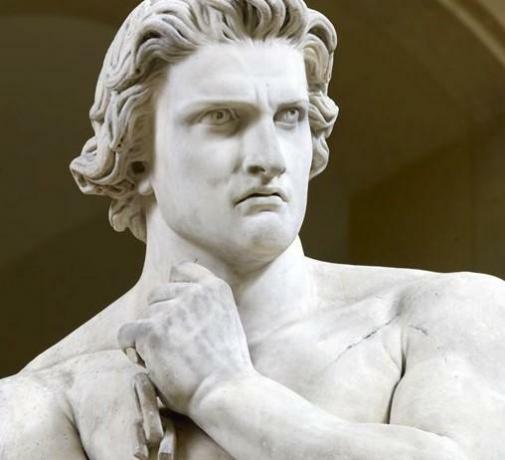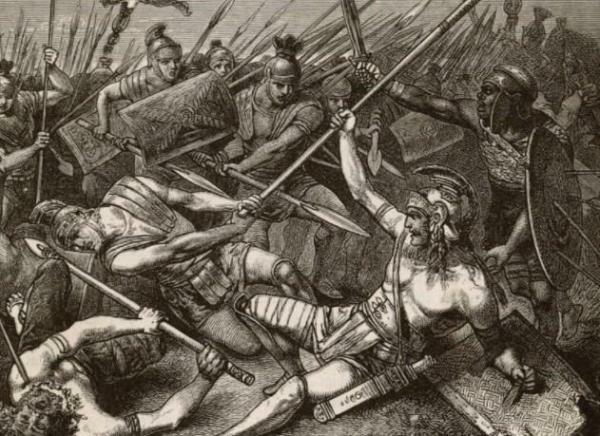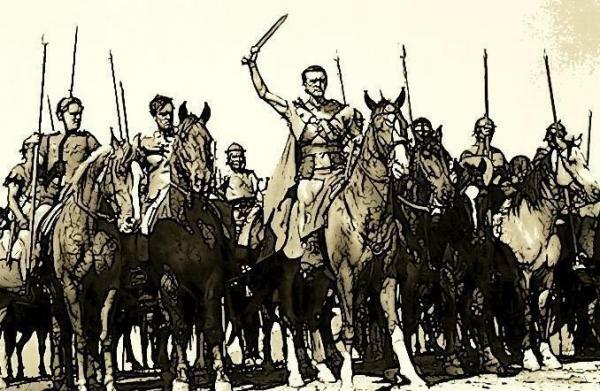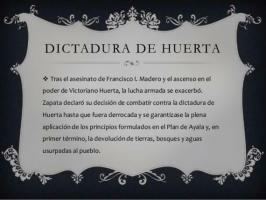Summary of the history of Spartacus

One of the best known stories of the Roman world and that has given rise to films and series, are the gladiator wars, in which slaves of different nationalities, who were under Roman rule, fought for the entertainment of the people. In this lesson from a TEACHER we bring you the summary of the history of Spartacus, a man who undoubtedly managed to put the Roman Republic in a great predicament, since he managed to lead a rebellion that between 73-71 BC. C. kept Italy under great pressure.
Index
- Who was Spartacus?
- How did the slave rebellion start?
- Spartacus as rebel leader
- The dissensions and the end of the rebellion
Who was Spartacus?
We begin the summary of the history of Spartacus, trying to place it geographically. Based on the few writings there are about this person, we can say that he was originally from Thrace and that around 113 a. C. he would be born near the town of Sandanski (Bulgaria). According to some chronicles that remain about this character, it seems that he was quite cultured, an element that is not surprising, given that he managed to put Rome under a great deal of trouble.
At first it seems that even he belonged to the auxiliary corps of Rome, from where he would desert, after this and because he was not a citizen of Rome, he was captured and made a slave. From that moment on, he was sent to the gypsum mines (a fairly common punishment among those who had been enslaved).
However, fate had another future for him, because given his physique, he was bought by a merchant, who would sell him to a gladiator school located in Capua, which belonged to Lentulo Batiatus.
How did the slave rebellion start?
The main element is, without a doubt, the great rebellion spartacus started. In the year 73 a. C., after studying the way to escape from the school together with Enomao and Crixto and 74 men, Espartaco began a flight from the city of Capua with all the weapons that They managed to find, which was increased when they found a shipment on one of the Roman roads near the city, which carried weapons for the gladiators. After that, his group marched towards Vesuvius, where they would locate their base camp.
From that moment, the slaves began to carry out a series of looting activities on the nearby towns distributing loot equally, an element that soon made the fame of Spartacus rise to the top and with it more men joined his cause.
The Government of Rome did not give importance to this threat and sent a brigade to end the uprising but the result of this was the victory of the slaves, which, after finishing the battle, seized the weapons of the Roman soldiers, making Rome see the danger that now existed.
For this reason, Cayo Claudio Glabro, who had a force of 3,000 men, was appointed to put an end to the danger. Said general underestimated the enemy and settled on the slope of the mountain, without even fencing off the area. This was used by Spartacus, who devised a plan to go down the steepest side of the mountain and thus unexpectedly catch the Romans, who fell under the arms of the slaves.
Is it was the first victory and it was named as the battle of Vesuvius.

Spartacus as a rebel leader.
Let's continue the summary of the history of Spartacus placing ourselves after the first victory. From that moment on, Rome took the problem much more seriously and on that occasion would send two legions in charge of Varinio what was defeated without much trouble since Spartacus had a quite numerous network of spies for the different layers of the society of the south of Italy.
After defeating these legions, many cities in the south were sacked by putting slavers and other slave oppressors to the knife. But it is that, in addition, Spartacus, seeing that the rebellion could get out of hand and end in a very negative way, began to form a regular army, organizing about 70,000 men, in addition to creating weapons and forming a good cavalry.
After that it is known that the idea of this was to take his group out of Italy, to go to territories not yet conquered by Rome, where to start a new life.

The dissensions and the end of the rebellion.
We know that around the year 72 a. C. began to emerge first discrepancies between the rebels and this ended with the separation of 20,000 men, mostly Germans and Gauls, under the command of Crixto. This character did not have the same technical ability as Spartacus and would soon fall under Arius (an officer of Consul Gelius) in the Battle of Apulia.
On the other hand, Spartacus continued with the idea of leaving Italy and, in his march to the north, he presented various battles where he defeated Arius, Gelius and Lentulus, also increasing his army until reach 120,000 men.
Once at this point, he presented battle to the legions of Gaius Cassius Longinus in the valley of the Po, after the victory of the rebels, had free passage to leave Italy, because no one would prevent. But a last-minute change of plans sent the slave army marching on Rome itself.
Marco Licinius Crassus he was the man in whom the Government left the safety of the city, and for this they were attached 10 legions. Even with so many men, there were several defeats that followed one another for the Romans, the only element that went well for them being the bribe some Sicilian pirates who were going to embark the troops of Spartacus to take them to the island and create a stronghold there impregnable.
From that moment on, Spartacus would face his last battle, the battle of the river Silario, in which he had to face 20 legions commanded by Pompey, Crassus and Lucullus in the year 71 a. C.; During the battle some 60,000 rebels would perish, among whom was Spartacus (according to documents, his body was never found) and after this, 6,000 rebels were crucified on the Appian Way (between Capua and Rome).
If you want to read more articles similar to Summary of the history of Spartacus, we recommend that you enter our category of Story.



